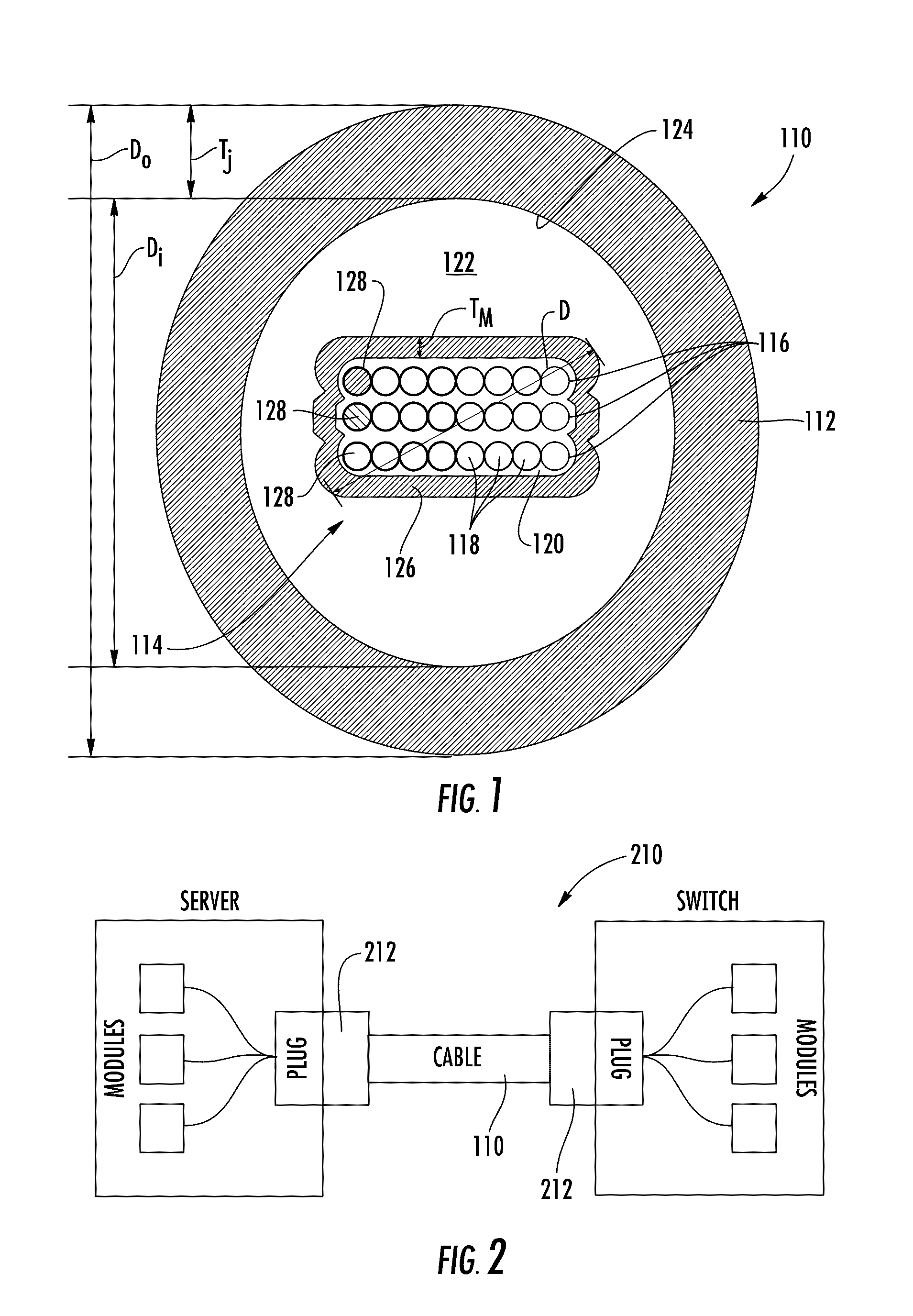Fiber optic ribbon cable
a fiber optic ribbon and fiber optic technology, applied in the field of fiber optic ribbon cables, can solve the problems of inflexibility, high cost of vcsel technology, and inability to meet the requirements of a single cable, and achieve the effect of decoupling the bend preference of the stack
- Summary
- Abstract
- Description
- Claims
- Application Information
AI Technical Summary
Benefits of technology
Problems solved by technology
Method used
Image
Examples
Embodiment Construction
[0012]Before turning to the Figures, which illustrate exemplary embodiments in detail, it should be understood that the present inventive and innovative technology is not limited to the details or methodology set forth in the Detailed Description or illustrated in the Figures. For example, as will be understood by those of ordinary skill in the art, features and attributes associated with embodiments shown in one of the Figures may be applied to embodiments shown in others of the Figures.
[0013]Referring to FIG. 1, a fiber optic ribbon cable 110 includes a jacket 112 surrounding a stack 114 of fiber optic ribbons 116. According to an exemplary embodiment, the stack 114 of fiber optic ribbons 116 includes at least three fiber optic ribbons 116, where each fiber optic ribbon 116 includes at least eight optical fibers 118 arranged side-by-side and coupled to one another in a common matrix 120, such as an ultra-violet light curable resin (e.g. acrylate).
[0014]Strength members 122, such a...
PUM
 Login to View More
Login to View More Abstract
Description
Claims
Application Information
 Login to View More
Login to View More - R&D
- Intellectual Property
- Life Sciences
- Materials
- Tech Scout
- Unparalleled Data Quality
- Higher Quality Content
- 60% Fewer Hallucinations
Browse by: Latest US Patents, China's latest patents, Technical Efficacy Thesaurus, Application Domain, Technology Topic, Popular Technical Reports.
© 2025 PatSnap. All rights reserved.Legal|Privacy policy|Modern Slavery Act Transparency Statement|Sitemap|About US| Contact US: help@patsnap.com



